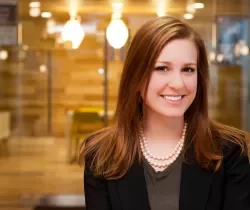Marissa Maybee

As Senior Director of Engagements and Analytics at Bear Analytics, Marissa Maybee shapes spreadsheets and exports story and forward-looking insights into data to help empower clients to grow their events and engagements.

Of all the types of event data we deal with at Bear Analytics, attendee verification data is one of the least exciting, but failure to understand who truly attends your trade show, conference or event robs your logistics and marketing teams of critical insights that can fuel event growth and more sophisticated forecasting and marketing.
Do you know how your event’s AOV coding is generated? Do you know, for sure, which registrants actually attended your last show?
Most large trade shows adhere to the Advance/Onsite/Verified (AOV) framework when it comes to verifying that a registrant actually attended the show: People who register in advance have several ways to get “verified” onsite, including at badge pick-up or check-in, security checkpoint scans, education session scans, and exhibitor lead scans from the show floor.
Often, event registration companies will combine several sources of verification data to make a final pronouncement on whether or not each advance registrant attended or not.
Here are the three reasons your organization should be placing an emphasis on the quality and utility of your attendee verification data.
1. Better forecasting and planning
While we’d like to be able to count on every registrant converting and coming to our events, we know life gets in the way via competing business priorities, family emergencies, even inclement weather or traffic snarls on the day of the event. This no-show behavior is especially prevalent at large trade shows, where certain segments of attendees often pay a nominal (or nonexistent) fee to only walk the exhibition floor.
Without trade show and event verification, there’s no way to distinguish registrants from actual attendees, and your projected attendance numbers could be significantly off from the real number. If you plan for 100 percent of registrants to attend, but historically only 80 percent have come, you could end up over-budgeting and losing money over these no-show registrants.
2. Sending different messages to attendees and no-shows
Sending the same message to all of your past trade show and event registrants assumes that they all attended your event and you lose an opportunity to tell no-shows that their absence was noted and their presence missed.
Despite the fact that we know the “no show” component exists, event marketers often ignore the difference between registrants – people who committed to attend an event at some point in the past – and attendees – people who actually showed up on site, had experiences and made valuable connections.
If you’re looking to increase attendance numbers, focus on targeting attendees and no-shows with distinct, targeted messages. Encourage attendees to return and get the past year’s no-shows excited enough to follow through and attend next year. No-shows are a warmer prospect pool than entirely new registrants – they have already taken the time to register once.
3. Verification data from multiple sources gives you insights on your attendees’ behavior
Beyond just telling you who’s coming to your show, event verification can show you what your attendees are doing once they arrive. Scanning attendees in at different locations can show how many people are actively visiting the exhibit floor or attending breakout sessions, and can also highlight which parts of your event are lacking in attendee involvement.
With this scan information, you can see what’s working, what’s not and which aspects of your event need the most attention to enhance its success.
Don’t overlook the value of your attendee verification data!

Add new comment